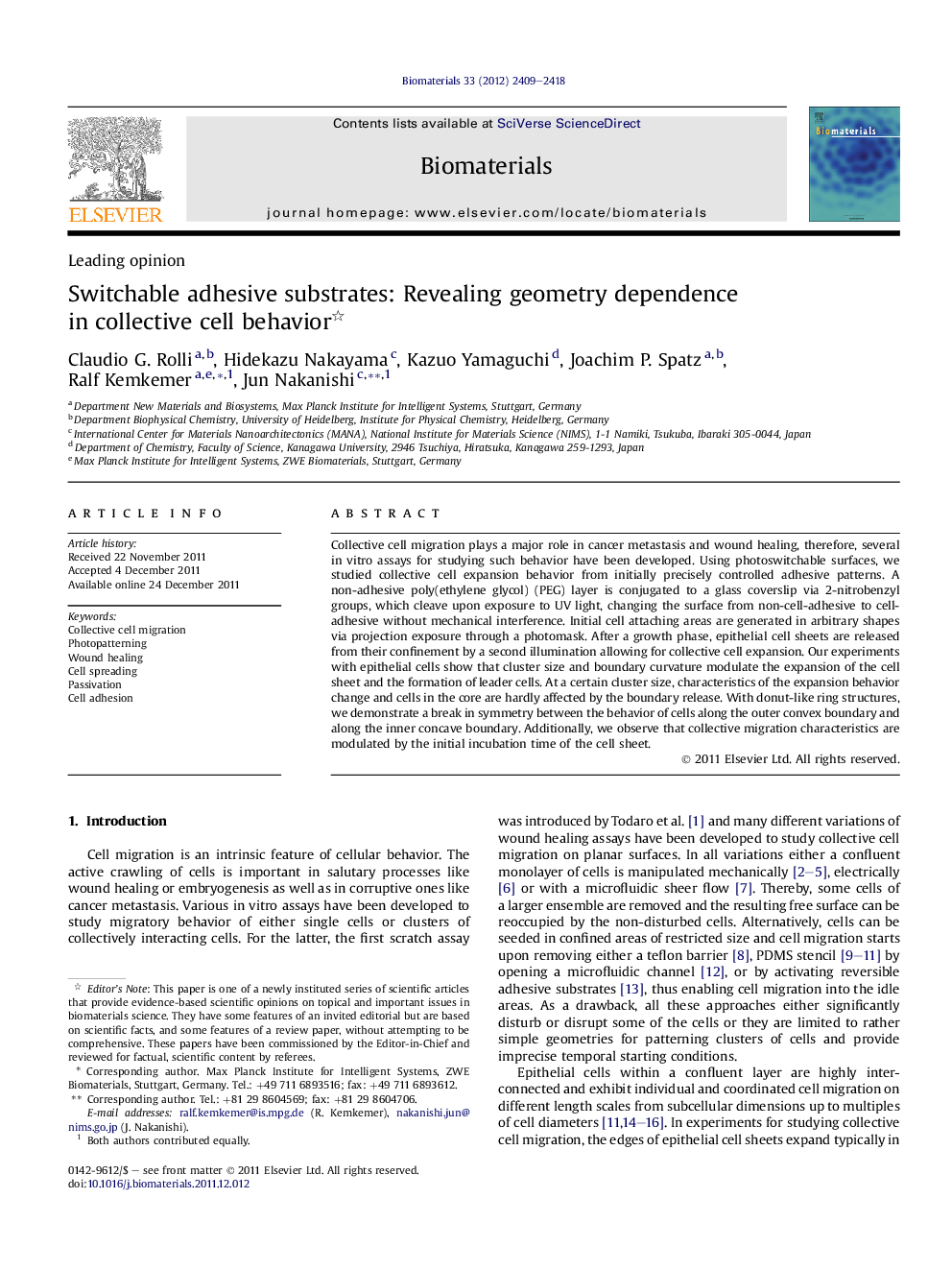| Article ID | Journal | Published Year | Pages | File Type |
|---|---|---|---|---|
| 6984 | Biomaterials | 2012 | 10 Pages |
Collective cell migration plays a major role in cancer metastasis and wound healing, therefore, several in vitro assays for studying such behavior have been developed. Using photoswitchable surfaces, we studied collective cell expansion behavior from initially precisely controlled adhesive patterns. A non-adhesive poly(ethylene glycol) (PEG) layer is conjugated to a glass coverslip via 2-nitrobenzyl groups, which cleave upon exposure to UV light, changing the surface from non-cell-adhesive to cell-adhesive without mechanical interference. Initial cell attaching areas are generated in arbitrary shapes via projection exposure through a photomask. After a growth phase, epithelial cell sheets are released from their confinement by a second illumination allowing for collective cell expansion. Our experiments with epithelial cells show that cluster size and boundary curvature modulate the expansion of the cell sheet and the formation of leader cells. At a certain cluster size, characteristics of the expansion behavior change and cells in the core are hardly affected by the boundary release. With donut-like ring structures, we demonstrate a break in symmetry between the behavior of cells along the outer convex boundary and along the inner concave boundary. Additionally, we observe that collective migration characteristics are modulated by the initial incubation time of the cell sheet.
